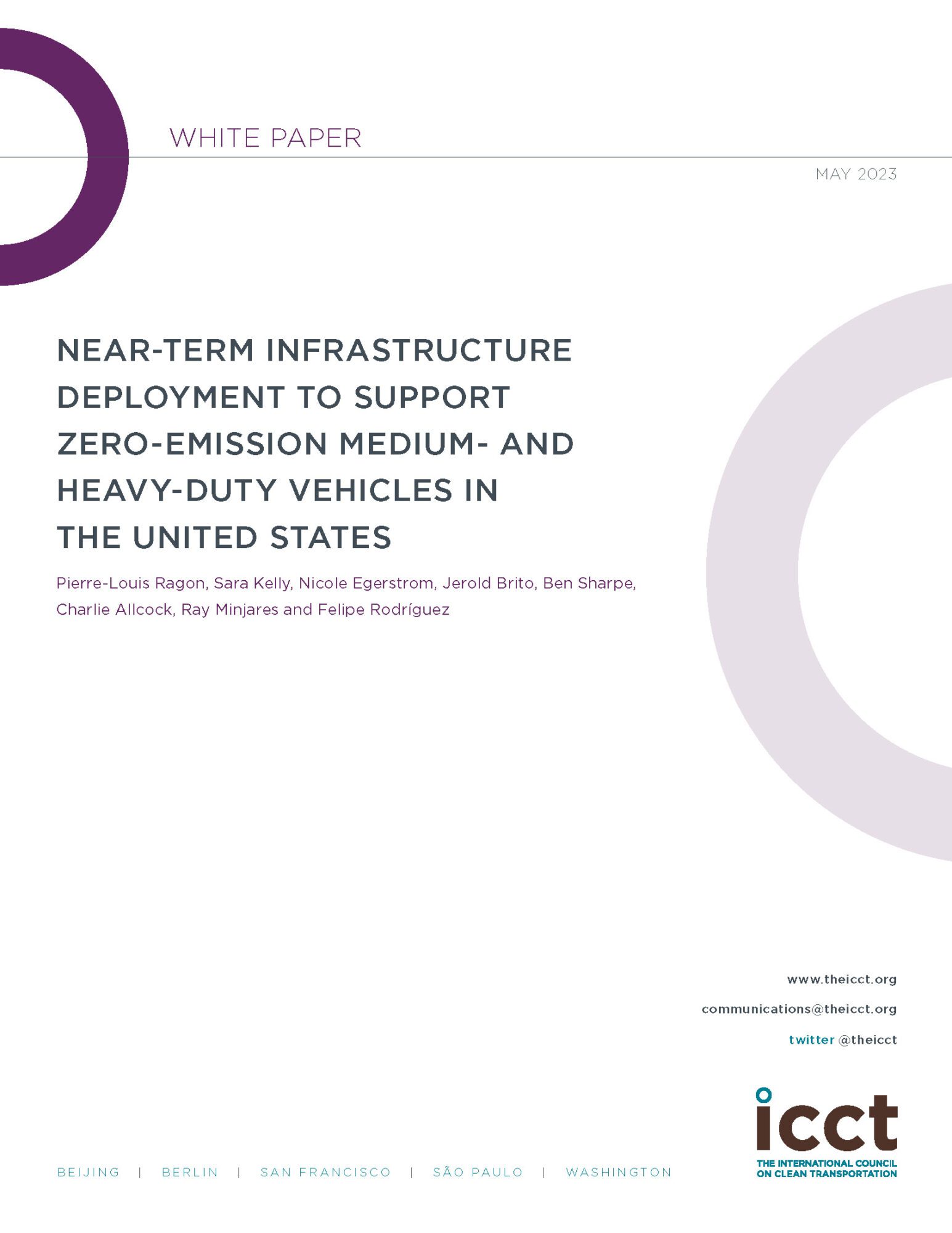Blog
Battery electric trucks in the U.S. Northeast: Electric utilities and planning for tomorrow
More than 20,000 trucks travel the network of roads in the U.S. Northeast corridor every day, many delivering goods from the harbors of New York, New Jersey, and Boston to factories and consumers throughout the country. Several signs now point to these trucks beginning the electric transition.
Inflation Reduction Act incentives coupled with declining costs are expected to make electric medium- and heavy-duty vehicles (MHDVs) economically attractive to own and operate. Manufacturers will be obliged to produce and sell electric trucks in New York and Massachusetts because the states adopted the Advanced Clean Trucks rule. The U.S. Environmental Protection Agency’s final 2027–2032 HDV CO2 emission standards set tighter emission limits on future MHDVs nationwide, and federal funding is beginning to flow to support the switch to zero-emission trucks as part of the Biden administration’s national goal of a zero-emissions freight sector announced late last month.
Thirty-one out of over 220 “zero-emission freight hubs” in Phase 1 and 2 of the recently published National Zero-Emission Freight Corridor Strategy are facilities located in Massachusetts, New York, and New Jersey. The Northeast corridor also stood out in our national infrastructure assessment of MHDV charging infrastructure needs in 2025 and 2030: Five counties surrounding ports in New York and Massachusetts ranked the highest in the United States for MHDV charging needs per square kilometer. Figure 1 is a map of estimated county-level power draw amount on the distribution grid; it illustrates the peak load, per square kilometer, from electric MHDV depot charging in 2030. Coastal counties near ports have the darkest shades, which indicate a high peak load.
Figure 1. Estimated peak load per square kilometer from fleet depot charging in 2030 in Connecticut, Massachusetts, New York, New Jersey, and Rhode Island counties. Source: Ragon et al. (2023).
Three investor-owned utilities–Consolidated Edison (Con Edison), National Grid, and Eversource—serve the counties with the highest MHDV charging needs in the Northeast. Their service territories are illustrated in Figure 2.
Let us highlight a few ways that these three are preparing to serve electric truck customers.
1. Subsidies. The high upfront costs associated with vehicle purchase and infrastructure installation for electric MHDVs is a major hurdle for truck fleet operators, and the Joint Utilities of New York, which includes Con Edison and National Grid, created a make-ready pilot program with a $67 million budget to assist fleets with installing chargers and estimating their vehicle and infrastructure costs. This program provides eligible fleets with subsidies for up to 90% of utility-side charging infrastructure installation costs and 50% of customer-side costs.
2. Tools to aid fleet decision-making and cost analysis. Utilities have created tools for their own use and for their customers to better understand grid-planning timelines, future upgrades that might be needed, and the costs involved in electrifying trucks. National Grid provides fleet advisory services that help customers estimate power demand and distribution impacts, understand their future electricity costs, and explore options to reduce electricity costs.
Con Edison created a fleet electrification calculator to help fleets estimate the cost of a charging station for different types of vehicles (light, medium, heavy) and it shows fleet owners their costs and savings if they switch to electric MHDVs. Once fleets put these tools to use, utilities can also get valuable customer behavior and preference data, which can help identify locations that need the most amount of power.
The Massachusetts Clean Energy Center and CALSTART created a program with Eversource and National Grid that assigns a project team to help fleet owners with the entire process of electrification. The team helps with things including searching for truck models, understanding funding opportunities and taking advantage of incentives, and planning for charging equipment.
3. Reduced electricity rates. The cost of operating battery electric trucks is highly dependent on electricity cost. Con Edison offers a $0.03/kWh rate reduction for charging between midnight and 8 am, and additional incentives for avoiding charging during peak times. For Con Edison, this has an added benefit because it could help smooth out the demand on the overall system, especially when loads from other activities are high.
There are other potential supports. One example from outside the Northeast is to offer multilingual fleet services. California’s Pacific Gas and Electric shares its EV fleet program in several languages, which makes accessing the information easier for a larger group of people.
What about distribution grid capacity? Can existing electrical assets handle electric truck charging? Based on the estimates from our 2023 infrastructure assessment, by 2030, the peak load from truck depot charging in areas served by National Grid, Con Edison, and Eversource could be up to 68 MW. The same study estimated that the nameplate capacity of chargers on local distribution grids, in other words, the theoretical maximum capacity where all MHDV chargers draw power simultaneously from the grid at their rated powers, can exceed 500 MW. This doesn’t account for public charging, which will also need electricity. Adding half a gigawatt of new nameplate capacity across the areas of service in the Northeast will likely involve new feeder lines, transformer upgrades, and potentially construction of substations that can cost hundreds of thousands or millions of dollars. It’s important to overcome the challenges, because long wait times may put projects behind schedule and put compliance with the Advanced Clean Trucks regulation at risk.
In response to a New York State Department of Public Service proceeding to address MHDV charging infrastructure challenges, the Joint Utilities of New York acknowledged the imminent need to build MHDV charging infrastructure and agreed that grid investments must be prioritized in areas where demand for power is high and spare capacity is tight. With federal funding and the help of CALSTART, National Grid has launched the Northeast Freight Corridors Charging Plan through which it aims to map out an electric truck charging network for the entire Northeast region.
Actions by the Joint Utilities of New York and National Grid reflect their willingness to take action to expedite and expand truck charging. The next step is to translate these signals to proactive planning, and for regulators to approve construction and connection of MHDV customers to the grid.
Authors
Jasreet Kaur Gill
Intern
Related Publications

Assesses the near-term charging and refueling infrastructure needs for Class 4-8 vehicles at the national and regional level.



